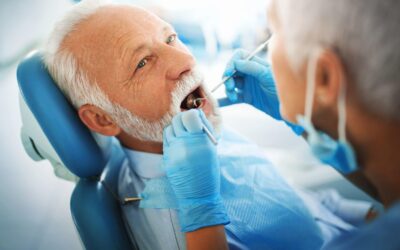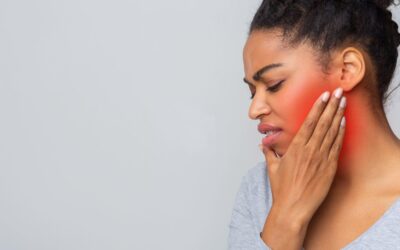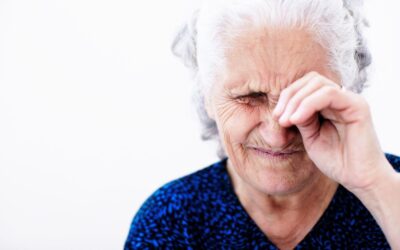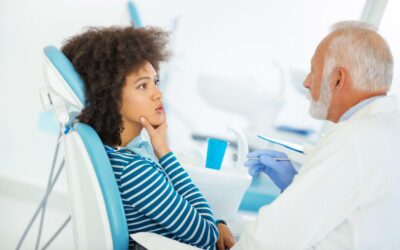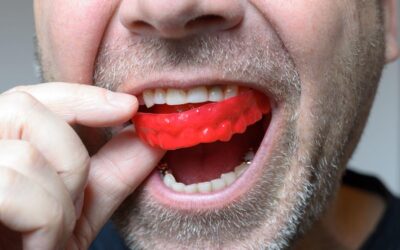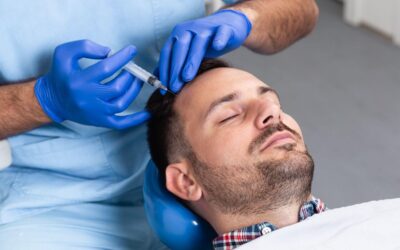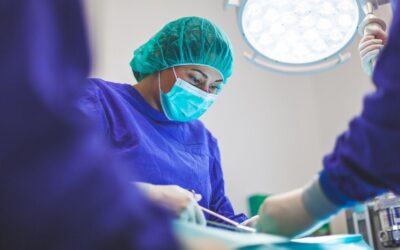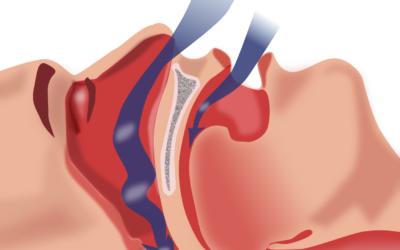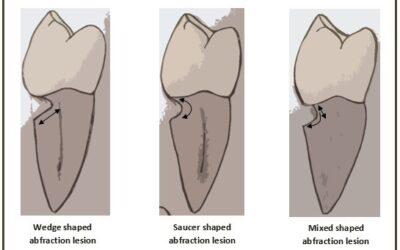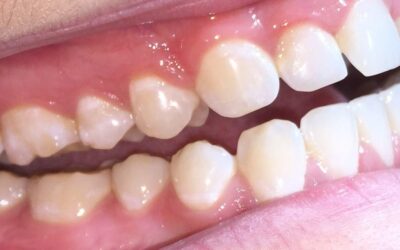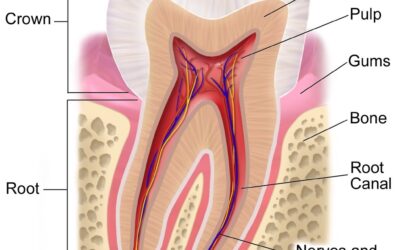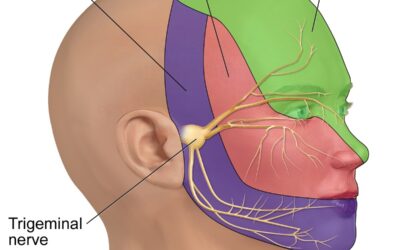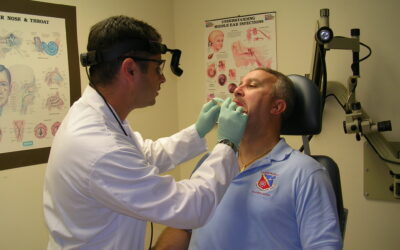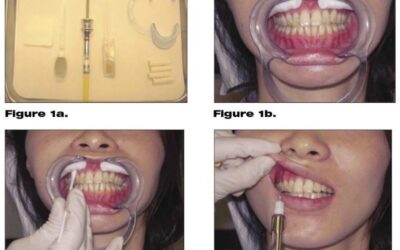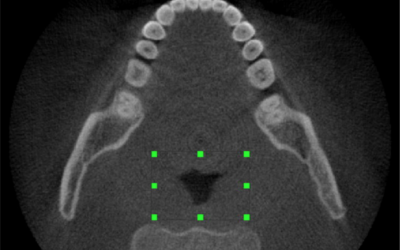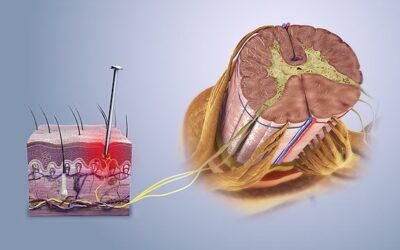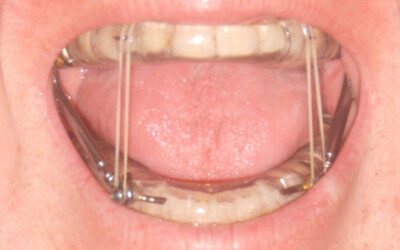Myoclonus is a frequently observed hyperkinetic movement disorder, which is often classified according to its anatomical origin. [1] Palatal myoclonus is characterized by involuntary palatal contractions, causing clicking tinnitus due to the action of soft palate...
Mechanism and Treatment of Orofacial Motor Tics
Rather than a voluntary movement, a tic is a movement which relieves a voluntary urge, and this is the key characteristic which differentiates a tic from another movement disorder. Motor tics of the orofacial area include tongue protrusion, facial grimacing, blinking,...
Teledentistry – Frequently Asked Questions
These FAQs were collected from a recent webinar on Telehealth & COVID-19 presented by the Herman Ostrow School of Dentistry with Dr. Glenn Clark, Professor Linda Brookman, Dr. Kamal Aleryani, and Dr. Steven Richeimer. What is Teledentistry in 2020?...
Oral Motor Disorders: Hemi-facial Spasms
Secondary Masticatory Muscle Spasm Occasionally the jaw closers or jaw openers can develop a continuous strong spastic activity which if sustained for a long period of time, will actually produce contracture with substantial shortening of the muscle. Often this...
Understanding Oral Motor Disorders: Synkinesis
Synkinesis A variation of hemi-facial spasm is the motor abnormality called synkinesis. This disorder occurs after a viral or traumatic paralysis of the seventh nerve. The nerve injury produces sprouting and the new motor connections cause inappropriate motor...
Drug Induced Dystonic-type Extrapyramidal Reactions
There are patients who have developed a drug induced oral motor hyperactivity which does not fit into the dyskinesia category. [1] Some prescription medications and illegal drugs produce a motor response which is better classified as an unspecified...
5 Ways to Treat Bruxism
Bruxism Definition Bruxism can be defined as nonfunctional jaw movement that includes clenching, grinding, clicking, and gnashing of teeth during sleep. Based on EMG recording of the jaw closers during sleep, there are two basic patterns of bruxism reported: (1)...
Chemodenervation Injections for Treating Oromandibular Dystonia
Chemodenervation Injecting Botulinum neurotoxin (BoNT) into the affected musculature has proved to be the most effective means of managing conditions such as cervical and oromandibular dystonia. [1] [2] Chemodenervation with BoNT has become the management modality of...
Surgical Management for Oromandibular Dystonia
Owing to the increased morbidity of surgery, it is usually reserved as a last resort for those patients that fail to respond to medications or for those that develop resistance to botox injections and there are several methods described in the literature. The surgical...
Treating Oromandibular Dystonia: Tricks & Medical Management
Management of oromandibular dystonia can be broadly divided into four domains: 1.) sensory tricks, 2.) medical management, 3.) chemodenervation using botulinum neurotoxin (BoNT), and 4.) surgical management. In this article, we explain the first two...
Hyperactive Oral Motor Disorders: Oromandibular Dystonia
Oromandibular Dystonia (OMD) Oromandibular dystonia (OMD) is a rare focal neurological disorder that affects mouth, face, and jaws, defined as an involuntary, repetitive, and sometimes sustained muscle contraction of the jaw and perioral muscles. Dystonia can be...
Introduction to Orofacial Movement Disorders
Movement disorders are a complex group of disorders spanning all aspects of neurological illnesses and range from conditions characterized by too little movement (hypokinesis) to those where movement is excessive (hyperkinesis) [1]. Movement disorders are...
The Dentist’s Guide: Obstructive Sleep Apnea & Sleep Disorders
Dr. Glenn Clark, DDS developed this content for his Systems Physiology, Sleep, Motor Disorders Course for Dental Residents of the Orofacial Pain and Oral Medicine master's program at the Herman Ostrow School of Dentistry of USC. Why is sleep a concern for dentists?...
Dental Erosion from Abrasion & Abfraction
What is dental abrasion? Unlike dental attrition, abrasion is the loss of tooth structure by mechanical forces from a foreign element. If this force begins at the cementoenamel junction, then the progression of tooth loss can be rapid since enamel is thin in this...
What is dental attrition?
What is dental attrition? The definition of dental attrition is the mechanical wearing of the incisal or occlusal surfaces of teeth as a direct result of functional or parafunctional tooth-to-tooth contact. The process is usually slow and rarely results in pulpal...
What is Tooth Erosion? Causes, Diagnosis, and Treatment
What is tooth erosion? Erosion is the wearing away of the tooth surface by an acid, which dissolves the enamel and the dentine. There are a variety of ways that tooth structure is lost. Food-based dental erosion was first described in 1892 among Sicilian lemon...
Obstructive Sleep Apnea Questionnaires for Dentists
When dentists need to test for Obstructive Sleep Apnea or hypersomnolence, sleep-related questionnaires can be of help. The following post explores some of the interview questions clinicians use in their assessment. Best Dental Questionnaires for OSA In addition...
Dental Exam Guide for New Patients with Obstructive Sleep Apnea
Learn how to conduct a comprehensive dental exam of a new patient who might be suffering from Obstructive Sleep Apnea. Comprehensive Dental Exam for New OSA Patients Below are the elements of a physical examination that should be conducted when assessing a possible...
5 Steps to Accurately Diagnose Chronic Trigeminal Neuropathy
Accurately diagnose the cause of neuropathic pains occuring in the trigeminal region such as atypical odontalgia, phantom tooth pain, burning mouth syndrome. Chronic Trigeminal Neuropathy Symptoms Pain that is continuous or burning Pain that does not have a clinically...
How to Conduct an Obstructive Sleep Apnea Workup
Learn how to complete a clinical report, standard medical interview, and physical and TMD examination for all new patients requiring a workup for sleep-disordered breathing. Clinical Report of Patient or Bed-Partner Bed partners of patients with obstructive sleep...
Diagnosing Trigeminal Neuralgia: Allodynia Mapping and Testing
Dr. Clark, Director of USC’s Online Master’s Degree in Orofacial Pain and Oral Medicine, teaches dental residents how to map, cold test, and anesthetic test Allodynia Zones to diagnose Chronic Trigeminal Neuralgia. Allodynia Mapping Neuropathic pain almost always...
Imaging Obstructive Sleep Apnea & Sleep Disordered Breathing
Discover how to image the airway obstruction site with patients suffering from Obstructive Sleep Apnea and other Sleep Breathing Disorders with Dr. Glenn Clark of the Orofacial Pain and Oral Medicine program at the Herman Ostrow School of Dentistry of USC. Can you...
Diagnosing Trigeminal Neuralgia: Conduct Neuropathic Pain Questionnaires
This blog is step 4 of Dr. Glenn Clark’s 5-step process for diagnosing Chronic Trigeminal Neuralgia. Dr. Clark, Director of USC's Online Master’s Degree in Orofacial Pain and Oral Medicine teaches dental residents how to diagnose neuropathic pain from nociceptive. By...
Obstructive Sleep Apnea Snoring vs. Simple Snoring
This article is part 4 of Dr. Glenn Clark’s lecture on Sleep Disordered Breathing for Dental Residents of the Online Master of Science in Orofacial Pain and Oral Medicine program at the Herman Ostrow School of Dentistry of USC. Can acoustics distinguish Obstructive...

